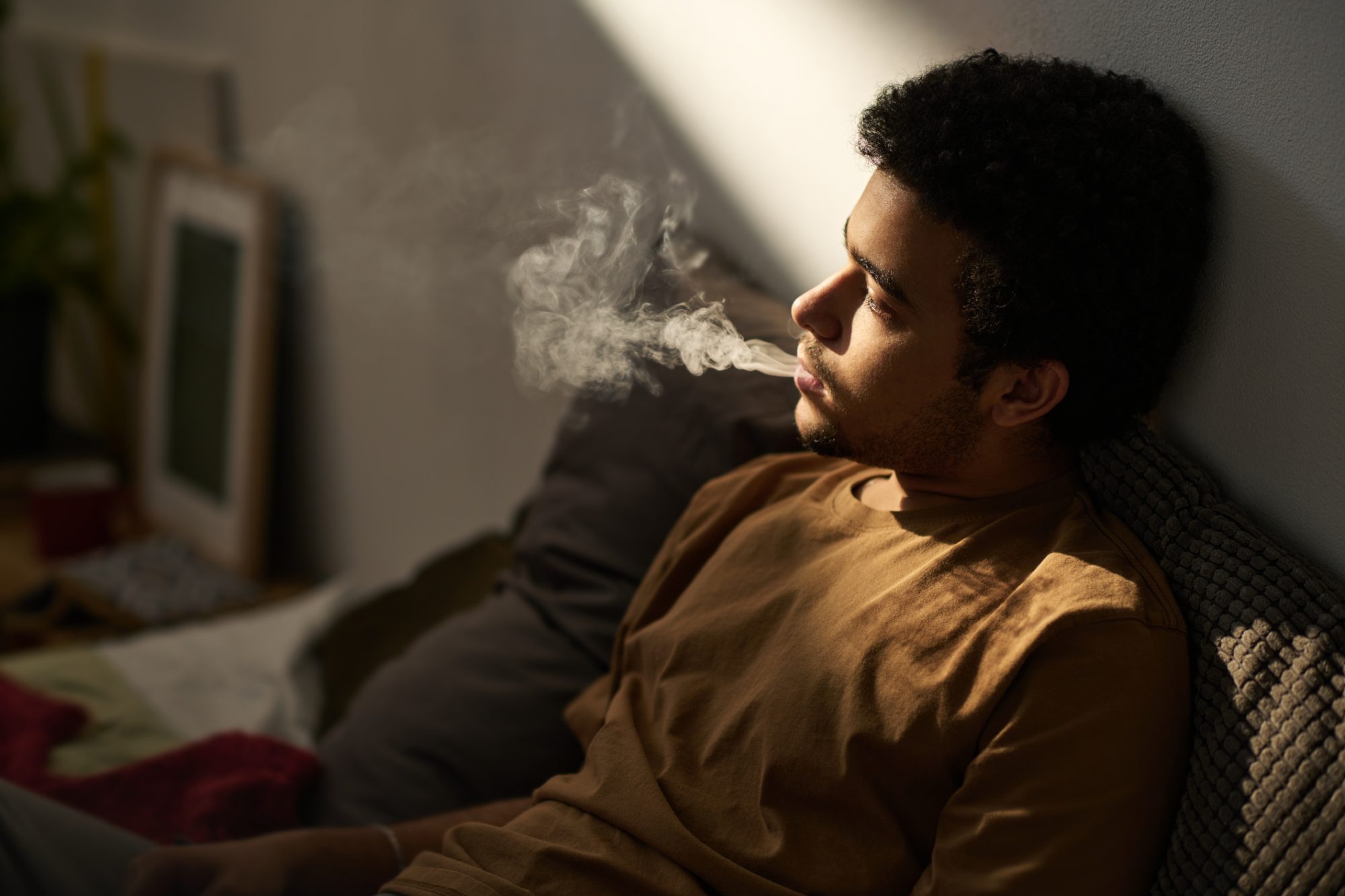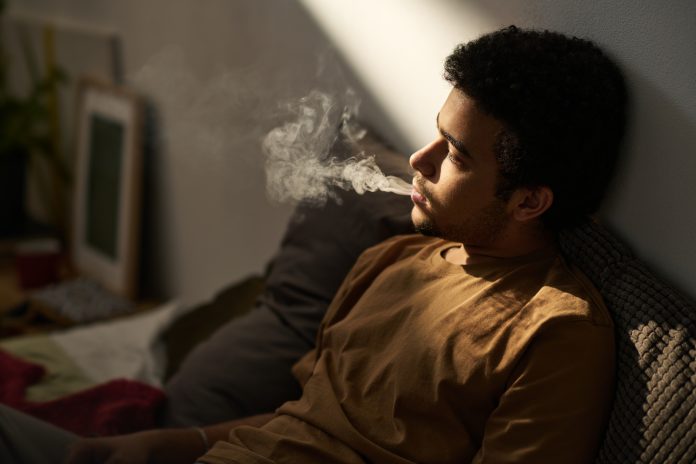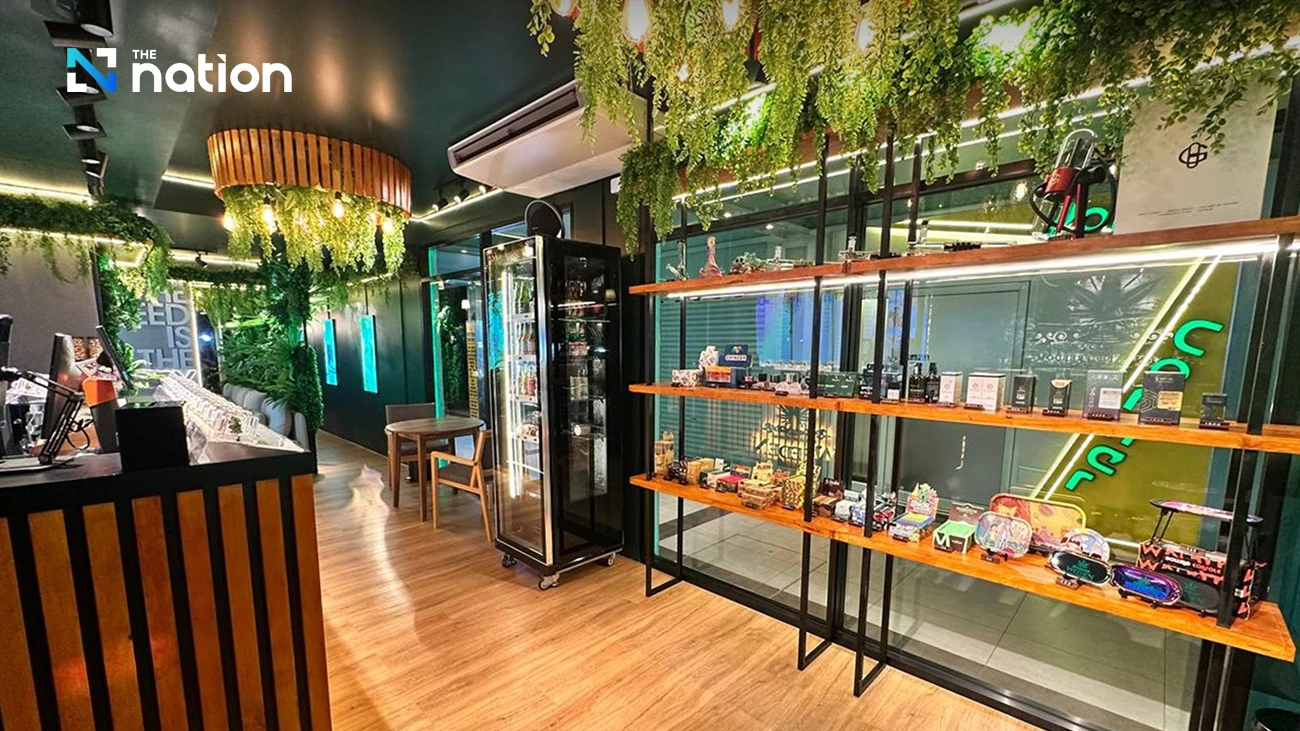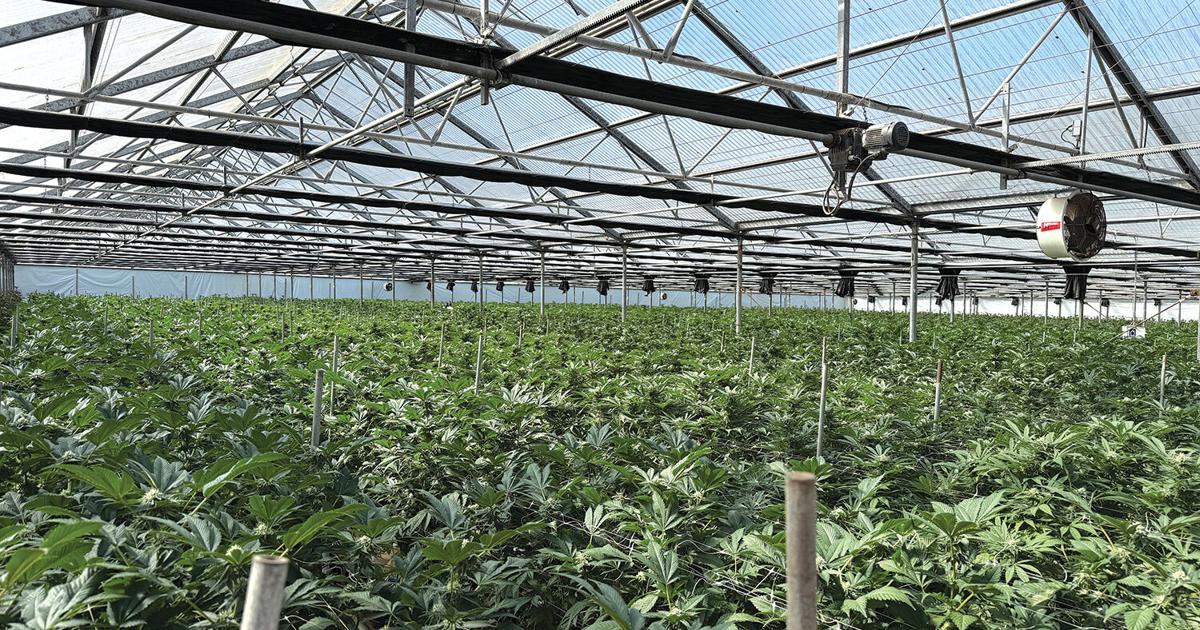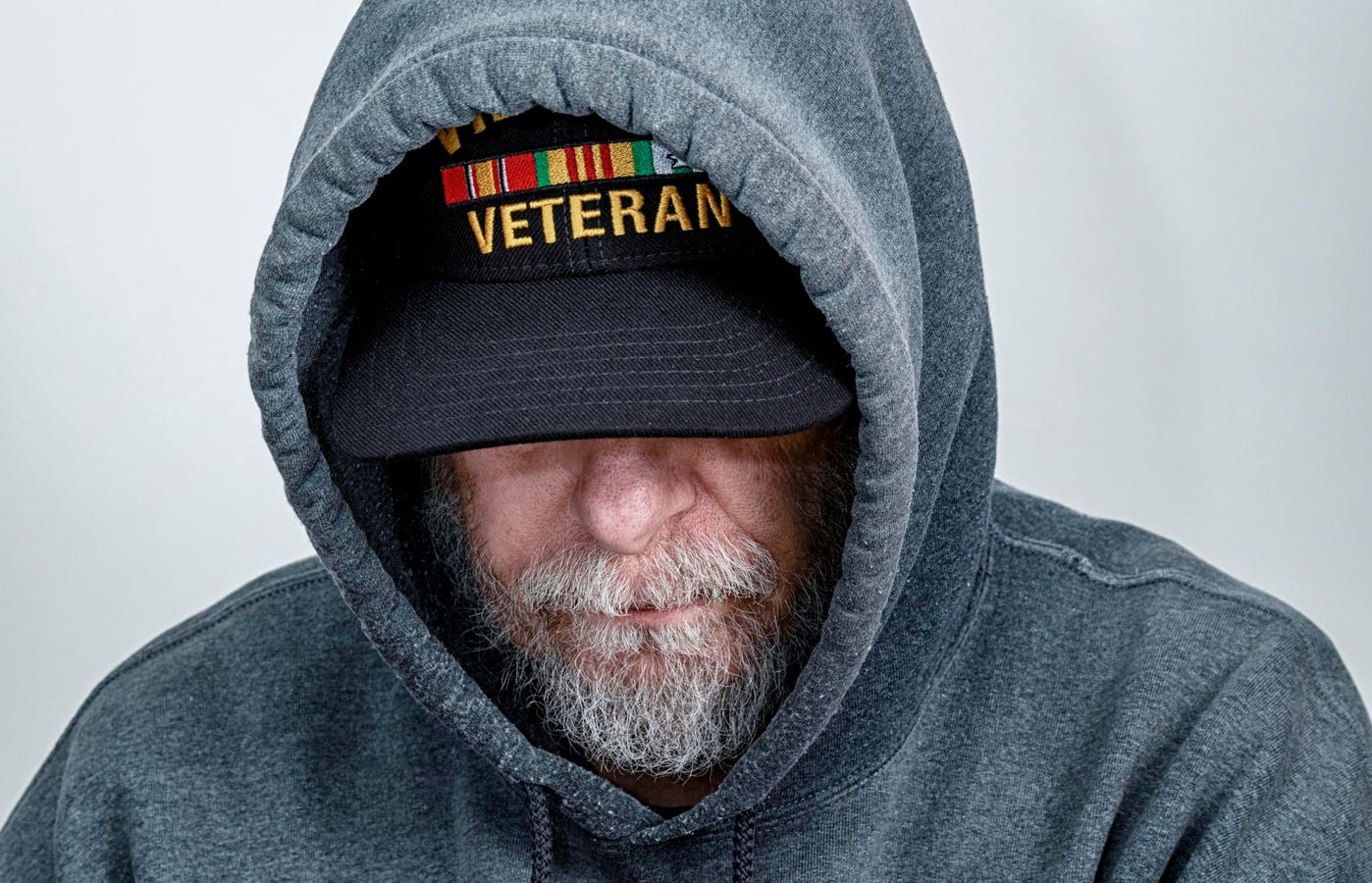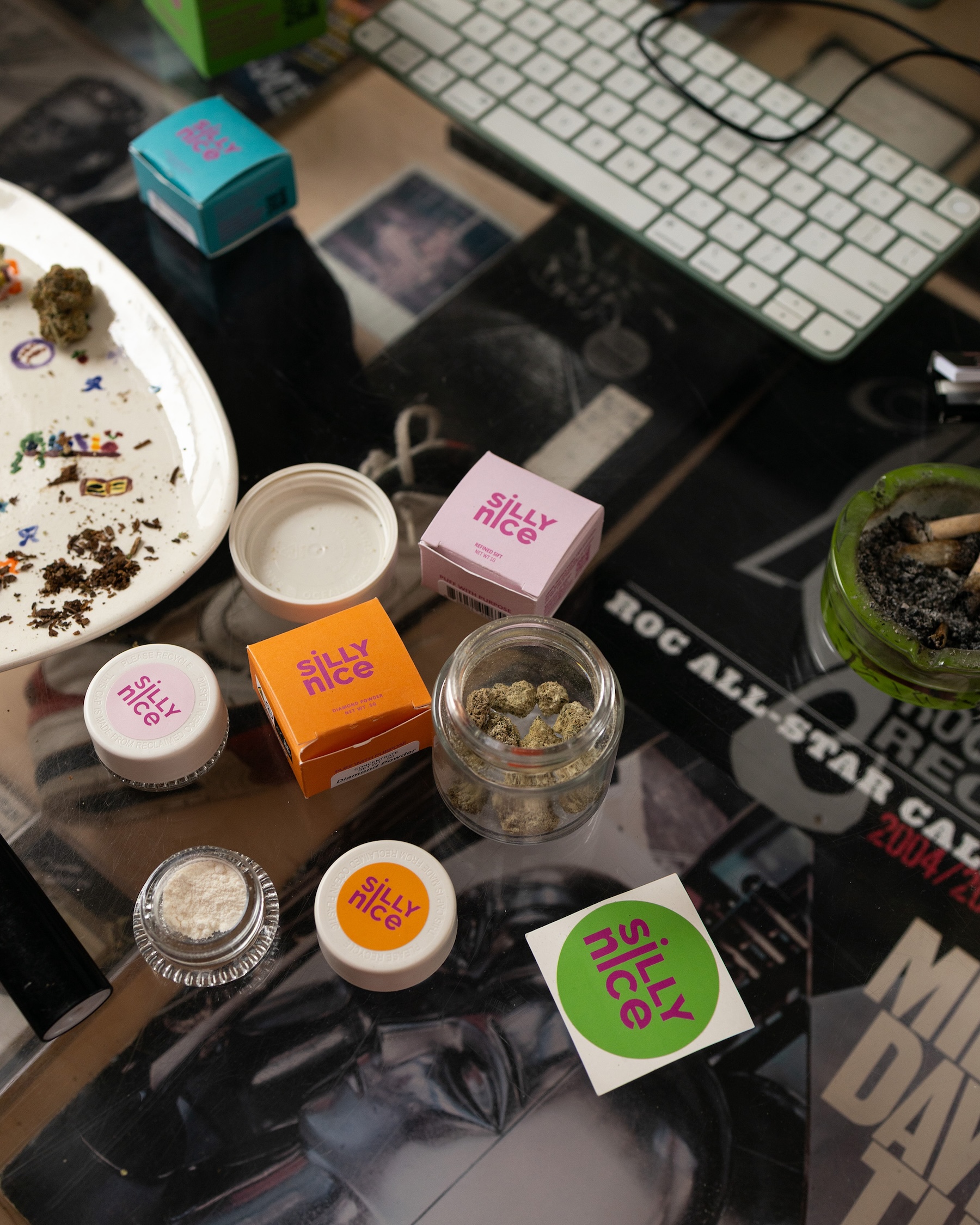
image from courtesy video
Key points:
- Musician Alec Bertrand files $10 million civil rights claim.
- Bertrand was injured during a cannabis farm immigration raid.
- Witnesses say federal agents used excessive force on peaceful protesters.
MARINA DEL REY, Calif. — A Camarillo musician whose hand was shattered during a military-style immigration raid on a cannabis farm has filed a $10 million federal civil rights claim against the Department of Homeland Security, U.S. Customs and Border Protection, and U.S. Immigration and Customs Enforcement.
The claim, filed Aug. 26 by civil rights attorney V. James DeSimone, accuses federal agents of targeting peaceful protesters with “less lethal” munitions during a chaotic July 10 raid on the Glass House cannabis greenhouse in Camarillo. Alec Bertrand, a guitarist and recording engineer, was struck multiple times in the span of 15 seconds, leaving him with permanent injuries and unable to pursue his work in music.
The raid involved ICE, DEA, DHS, and National Guard troops who descended on the cannabis greenhouse in search of undocumented farmworkers. Protesters gathered nearby to voice their opposition, decrying the racial profiling of Latino workers and demanding that farmworkers’ rights be respected. Witnesses say the protest was nonviolent, with demonstrators holding signs and chanting from the roadside.
One man died during the raid. Several others were arrested or injured. Bertrand, who had only been at the protest for about 30 minutes, was hit at least six times by projectiles fired by federal agents. He was struck in the testicle, shoulder, leg, and hand. The impact to his hand shattered the bones in his finger, causing profuse bleeding. He drove himself to the hospital, where doctors determined his finger would require surgery. Four days later, surgeons inserted a screw into the finger, but Bertrand continues to experience pain, limited mobility, and fears permanent damage.
“These masked federal agents unnecessarily shot Mr. Bertrand multiple times with less-lethal ammunition, causing serious injury while he was peacefully protesting,” DeSimone said in a statement. “Their conduct demonstrated callous disregard and willful violation of the U.S. Constitution, including the First Amendment and the Fourth Amendment right to be free from unreasonable searches and seizures. Under the Federal Tort Claim Act, the United States of America can be held liable under California Law Civil Code 52.1, the Bane Civil Rights Act”.
The tort claim is the first procedural step in pursuing a lawsuit against the federal government. Bertrand’s legal team is seeking $10 million in damages for assault, battery, violation of the Bane Act, and intentional infliction of emotional distress. The filing states that Bertrand has suffered both physical and psychological injuries, along with economic losses including medical bills and lost wages.
The documents filed with DHS and ICE describe how Bertrand never came closer than 10 feet to the line of federal officers blocking Laguna Road. The crowd numbered about 40 people and was described as nonviolent. According to the claim, officers in militarized gear began firing tear gas and “less lethal” rounds into the group without giving any warning to disperse. Within seconds, Bertrand was targeted and struck multiple times, culminating in the projectile that destroyed his finger.
The claim asserts that the officers’ use of force was not only unnecessary but unconstitutional. Bertrand’s attorneys argue the attack violated his First Amendment rights to free speech and peaceful assembly and his Fourth Amendment right to be free from unreasonable searches and seizures. California law also provides protection under the Bane Act, which prohibits interference with civil rights through threats or violence.
“This was not law enforcement, it was an assault on the constitutional rights of peaceful citizens,” DeSimone said. “If the federal government can get away with this, no protester in America is safe”.
DeSimone is no stranger to suing the federal government under the Federal Tort Claims Act. In Xue Lu v. Powell, he represented asylum applicants who accused a federal asylum officer of soliciting bribes and sexually abusing them. The Ninth Circuit held that the United States could be held liable under the FTCA because the officer’s misconduct occurred within the scope of his federal employment. That precedent allowed victims to recover damages under California civil rights law, including the Bane Act.
By invoking Xue Lu v. Powell, Bertrand’s claim ties his injuries to an established legal path for holding the federal government accountable. The Ninth Circuit’s ruling made clear that even criminal or abusive acts by federal officials can expose the United States to liability if they are sufficiently connected to the officials’ employment duties.
The claim alleges that agents violated multiple sections of California law, including provisions prohibiting assault, battery, and the reckless use of weapons. It also points to the California Penal Code, which outlines limits on police use of force, arguing that the federal officers’ actions failed every standard of necessity and proportionality.
The filing emphasizes the impact on Bertrand’s life as a working musician and engineer. His left hand remains impaired despite surgery, and he fears he will never regain the dexterity required to play guitar or record music at a professional level. In addition to lost income, Bertrand continues to deal with emotional trauma from the incident. The experience, his attorneys say, has left him fearful of future protests and distrustful of law enforcement.
Witnesses at the scene confirmed that the demonstration was peaceful. According to declarations included in the filing, no one in the crowd threw objects or made physical contact with officers. Instead, they stood with signs and chanted against the raid. The protesters’ demands focused on ending racial profiling and ensuring due process for farmworkers.
Federal agents, however, escalated the situation. The claim describes officers forming a line across Laguna Road, armed with heavy weapons and wearing identifying patches for ICE and CBP. After approximately 20 minutes, the officers began launching tear gas grenades and firing projectiles into the crowd without issuing any dispersal order. Bertrand was one of the first to be hit, with successive shots striking his body until the final round smashed into his hand.
Medical records included in the claim show that Bertrand required emergency treatment and later surgery. A hand specialist inserted a screw into his finger on July 14. As of late August, Bertrand’s mobility remained limited, and his doctors cautioned that he may never fully regain use of his hand. His attorneys say he faces long-term therapy and continued pain.
The Federal Tort Claims Act allows private citizens to seek damages from the U.S. government for injuries caused by federal employees acting within the scope of their employment. In California, those claims may also invoke state civil rights protections, including the Bane Act, which provides enhanced remedies for violations committed through threats, intimidation, or violence. DeSimone’s filing argues that the federal officers’ conduct meets the elements for all of these violations.
The case reflects broader concerns about federal immigration enforcement tactics in California. Advocates have criticized the militarization of raids and the use of armed agents against civilian demonstrators. Bertrand’s case, his attorneys argue, highlights the dangers of treating peaceful protest as a threat to national security rather than an exercise of constitutional rights.
The legal process now shifts to the federal government, which must respond to the tort claim. If the claim is denied, Bertrand and his attorneys can file a lawsuit in federal court seeking damages. The claim makes clear that they intend to pursue both state and federal causes of action if litigation proceeds.
Bertrand’s attorneys say his case is about more than one injured protester. They argue it raises fundamental questions about the limits of federal power, the militarization of law enforcement, and the ability of ordinary citizens to protest government actions without fear of violence.
Follow the Vanguard on Social Media – X, Instagram and Facebook. Subscribe the Vanguard News letters. To make a tax-deductible donation, please visit davisvanguard.org/donate or give directly through ActBlue. Your support will ensure that the vital work of the Vanguard continues.
Categories:
Breaking News Everyday Injustice
Tags:
Alec Bertrand Bane Act Camarillo raid Civil Rights DEA Department of Homeland Security DHS Federal Tort Claims Act Glass House cannabis greenhouse ICE National Guard U.S. Customs and Border Protection V. James DeSimone


